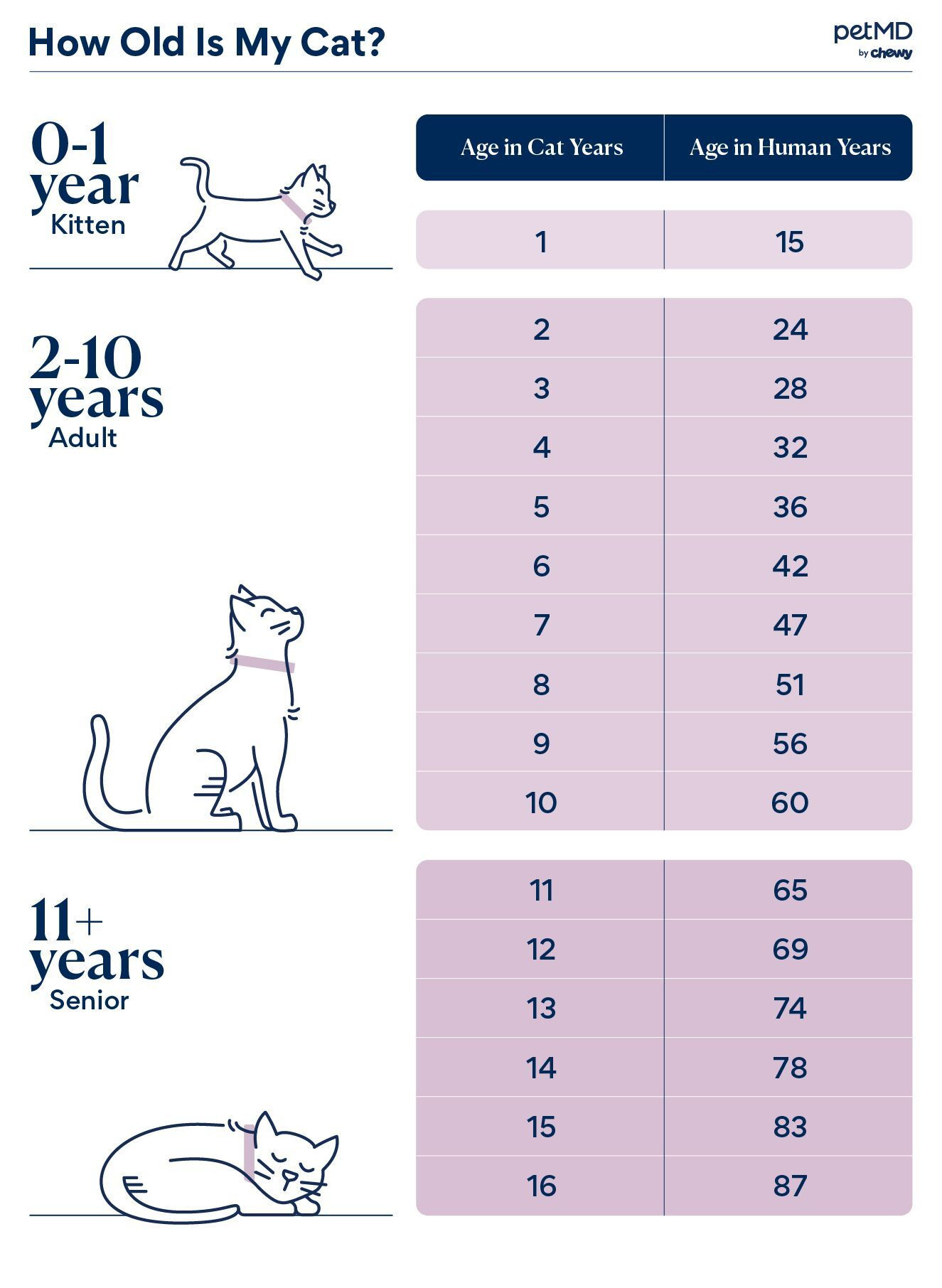Cat birthdays are a purr-fect excuse to celebrate our feline friends, who we know are cherished members of the family. However, a single birthday each year doesn’t quite capture the nuances of a cat’s aging process. Understanding how cat years translate to human years can give us a better perspective on their life stages and evolving needs.
“Understanding cat years in human terms allows us to better grasp where our feline companions are in their life journey compared to ourselves,” explains Dr. Mary Gardner, DVM, a respected veterinarian and co-founder of Lap of Love Veterinary Hospice. “Just as we might experience mobility challenges in our senior years, a cat of 11 or older – equivalent to around 60 human years – might face similar age-related changes.”
So, how do we accurately determine our cat’s age in human years and use this knowledge to enhance their well-being? Let’s dive into the world of cat ages and explore the Cat Ages Chart.
Key Insights into Cat Aging
- In their first year, cats rapidly develop, reaching the human equivalent of approximately 15 years old.
- Regardless of breed, cats generally follow a similar aging trajectory.
- Veterinarians have several methods to estimate a cat’s age, especially helpful for adopted cats with unknown histories, using health indicators.
Unraveling Cat Years to Human Years
Forget the old myth of multiplying cat years by seven! Calculating a cat’s age in human years is a bit more nuanced than that simple formula.
According to the American Veterinary Medical Association (AVMA), a cat’s first year is equivalent to about 15 human years. By their second birthday, they’ve reached roughly 24 human years. After this initial rapid aging, cats mature at a rate of approximately four human years for each subsequent cat year.
While breed variations exist in size and some predispositions, the general aging process remains remarkably consistent across cat breeds.
How to Interpret the Cat Ages Chart for Your Feline
To easily understand your cat’s age in human years, refer to the cat ages chart below. This chart provides a clear conversion, helping you recognize the different life stages of your feline companion.
 A infographic chart detailing the age conversion of a cat
A infographic chart detailing the age conversion of a cat
Determining Your Cat’s Age When History is Unknown
Many cat owners adopt their feline friends, celebrating a “gotcha day” instead of a traditional birthday. However, knowing your cat’s approximate age is crucial for providing age-appropriate care. Veterinarians are skilled at estimating a cat’s age using several indicators:
- Teeth Examination: A key indicator, teeth reveal a lot about age. Kittens develop their first teeth around 2-4 weeks, and permanent teeth by 3-4 months. Adult cats will show tartar buildup over time, with significant tartar often present in older cats. However, diet and dental care can influence teeth condition, so this is one of several factors.
- Eye Examination: Young cats typically have bright, clear eyes. As cats age, the iris can become more cloudy, and signs of conditions like lenticular sclerosis (a bluish haze) may appear in older cats.
- Coat Condition: Younger cats usually have soft, fine fur. As they age, a cat’s coat may become thicker, coarser, and potentially include gray or white hairs, particularly around the face. However, coat condition can also be affected by health and grooming.
- Muscle Tone and Body Condition: Kittens and young adult cats are typically lean and muscular. Older cats may experience muscle loss and become less active. However, weight and body condition must be evaluated in conjunction with other factors as they can be influenced by diet and health conditions.
- Activity Level: Kittens are naturally energetic and playful. While adult cats still play, senior cats tend to be less active and sleep more. Changes in activity level are a general indicator but can also be related to health issues.
By considering these factors holistically, veterinarians can provide a reasonable estimate of a cat’s age, even without a known birthdate.
Cat Lifespan: Living Longer, Healthier Lives
Thanks to advancements in veterinary medicine, improved feline nutrition, and the strong bonds we share with our cats, our feline companions are enjoying longer lifespans than ever before.
“The average lifespan for a cat today is around 12 to 15 years. Purebred cats tend to live slightly shorter lives, averaging about 12.5 years, while mixed-breed cats often live a bit longer, around 14 years,” notes Dr. Gardner. However, many cats, with proper care, live well into their late teens and even twenties.
Understanding your cat’s age, using a cat ages chart and veterinary guidance, empowers you to provide the best possible care throughout every stage of their life. This knowledge ensures you can tailor their nutrition, healthcare, and environment to meet their evolving needs and maximize their well-being as they journey through each life stage.
Featured Image: iStock/Drazen_
